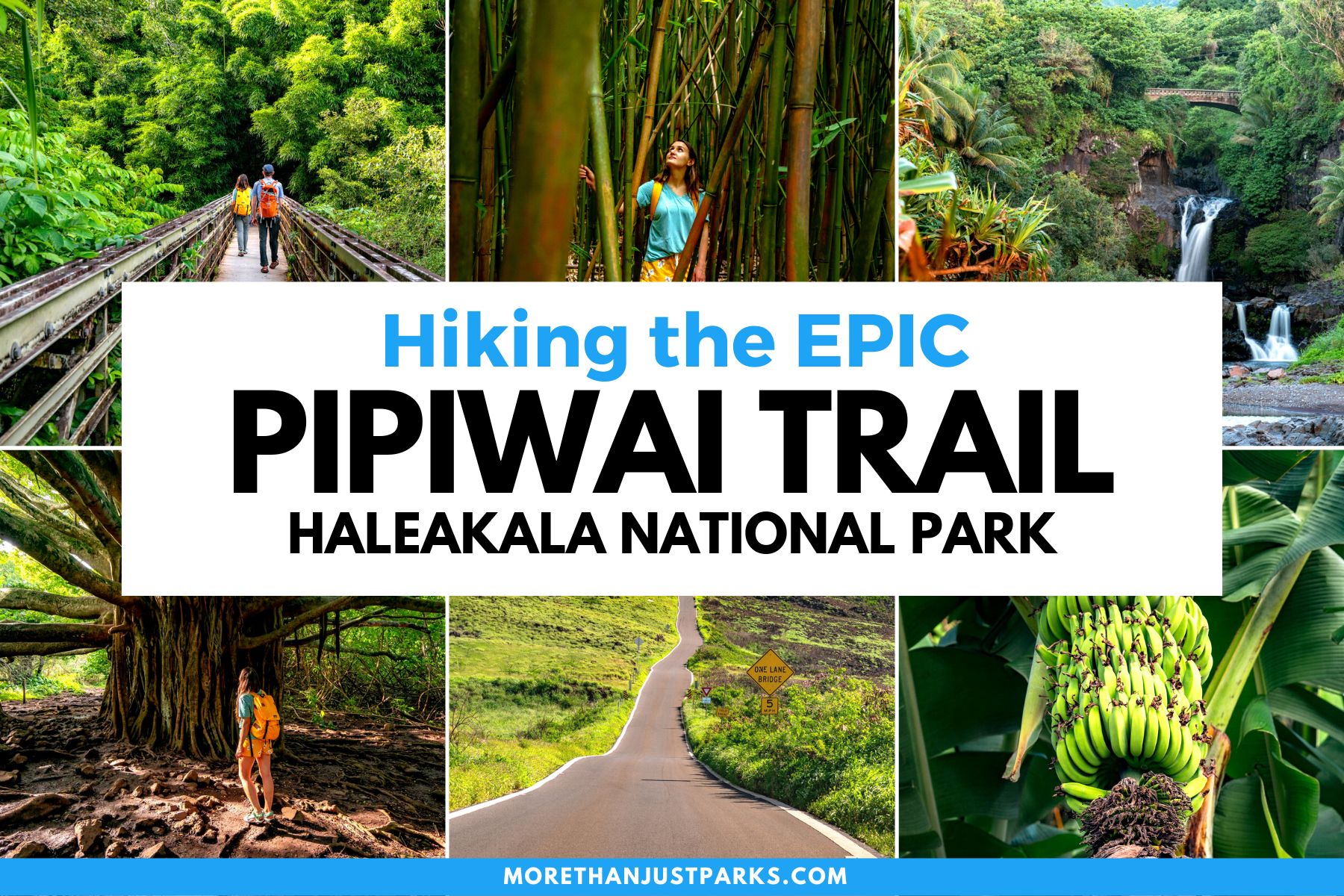
Article Overview: Hiking the Pipiwai Trail, Bamboo Forest on Maui, Banyan Tree, Waimoku Falls
Located at within a few miles of the very end of the stunning Hana Highway on the lesser traveled side of Haleakala National Park lies one of the greatest hikes in the entire national park system, the Pipiwai Trail.
The Pipiwai Trail is basically the perfect national park trail with three very unique sections that feature totally different scenery and saves the best part for the very end.
The trail starts at the Kipahulu Visitor Center parking lot, winds its way up a rooty forest, across a river, through Maui’s best bamboo forest, and eventually to the breathtakingly massive Waimoku Falls.
What more can you ask for?

In This Pipiwai Trail Article
If you’re considering hiking this trail there’s some things you should know. In this brief article I’ll cover everything you need to know when hiking the Pipiwai Trail including:
- Getting to the Pipiwai Trail
- What to wear & pack
- What kind of shoes for the Pipiwai Trail
- Pipiwai Trail Details
- How to get to the Pipiwai Banyan Tree
- Getting to the Pipiwai Bridge
- How to get to the Maui Bamboo Forest
- How to get to Waimoku Falls
Ready to go? Let’s get started!

Table of Contents: Pipiwai Trail
Table of Contents: Pipiwai Trail, Bamboo Forest, Banyan Tree, & Waimoku Falls Hike
- Things to Know Before You Visit Haleakala National Park
- Best Time to Hike the Pipiwai Trail
- Where to Stay in Haleakala
- The Pipiwai Trail
Things to Know Before You Visit Haleakala National Park
Entrance Fees
$30 per vehicle OR if you plan to visit more National Parks within the next 12 months we suggest you go ahead and purchase the America the Beautiful Pass (available at the park entrance gate). The pass gets you into all National Parks, Forests, Monuments, and more including 2,000 sites for free after a one time $79 fee.
Sunscreen
Use it. Lots of it. We happen to like this one because it works AND its reef safe meaning it’s not full of a bunch of chemicals.
Leave No Trace
We’re big fans of Leave No Trace, here at MTJP. Want to learn more? Read about the seven principals of Leave No Trace here.
Insect Repellent
We carry around an Eco-Friendly Insect Repellent with us, especially on the Pipiwai Trail, as mosquitoes can be a bit wild in the parks.
Cell Service
Cell service is pretty spotty in the park, particularly in the forests. Higher elevations without tree cover provide better coverage, you can also find service in Hāna.
Best Time to Hike the Pipiwai Trail
Best Time to Visit the Pipiwai Trail is on a bright sunny day when it hasn’t rained recently. This will give you the least muddy conditions. Check the forecast for Hana to see the most accurate weather for the Pipiwai Trail.
Food
Pickings can be slim for food in Haleakalā so you’ll want to plan ahead of time and bring plenty of snacks. That being said, there are a select few great spots to grab a bite near the park.
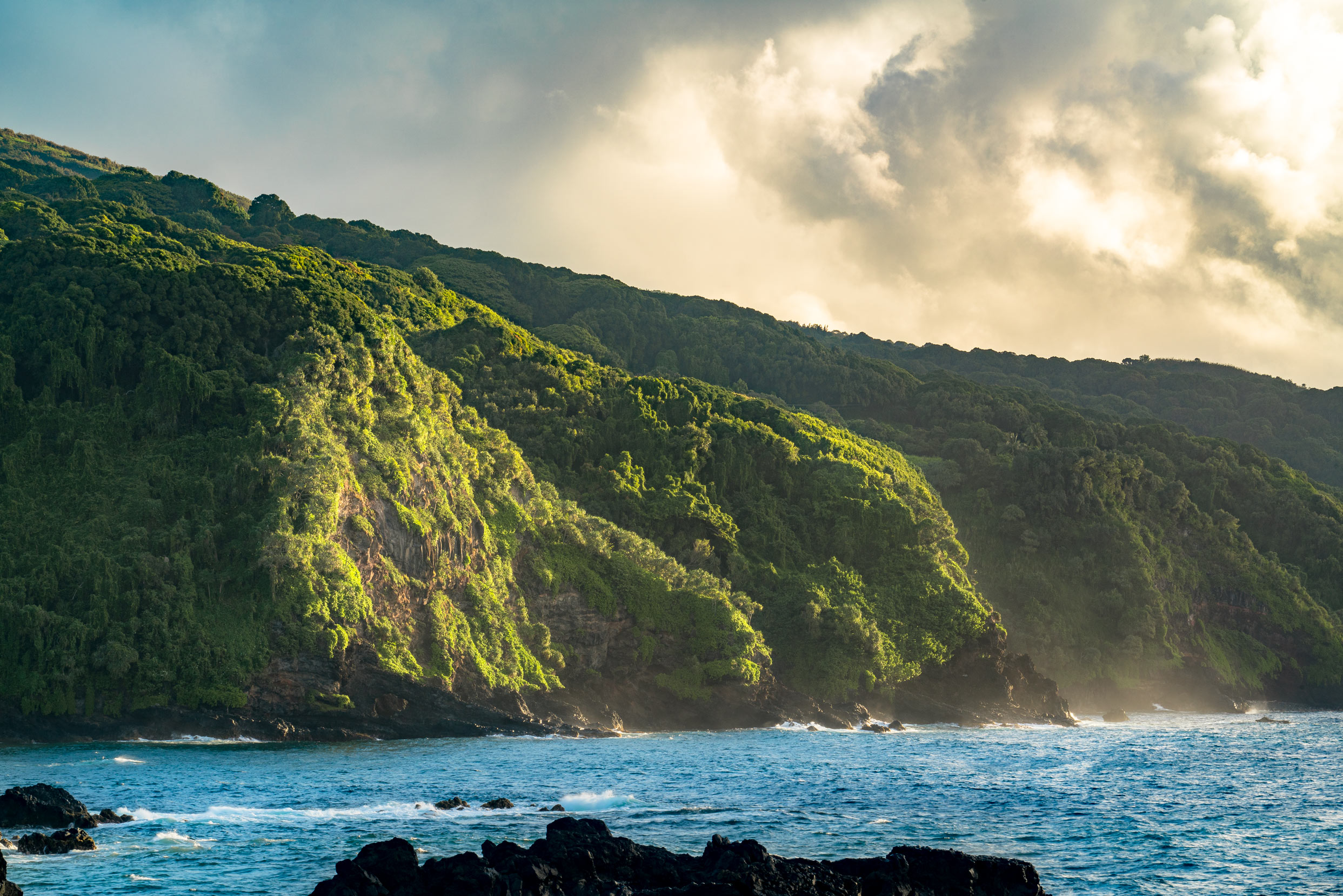
The Pipiwai Trail
Getting to the Pipiwai Trail
The Pipiwai Trail starts at the parking lot of the Kipahulu Visitor Center of Haleakala National Park. Getting to the Pipiwai Trail requires a drive down the famed Road to Hana.
Once you arrive you’ll have to go through an entrance station where a fee of $30 per vehicle is required. I recommend parking on the upper loop of the parking lot as it’s closer to the Pipiwai Trailhead.
You’ll see signs in the parking lot for the trail which is hard to miss.
If you don’t see the signs then head to the far side of the back loop closest to the road and furthest from the entrance station until you see the signs or the trail. The official trail starts across the road from visitor center.
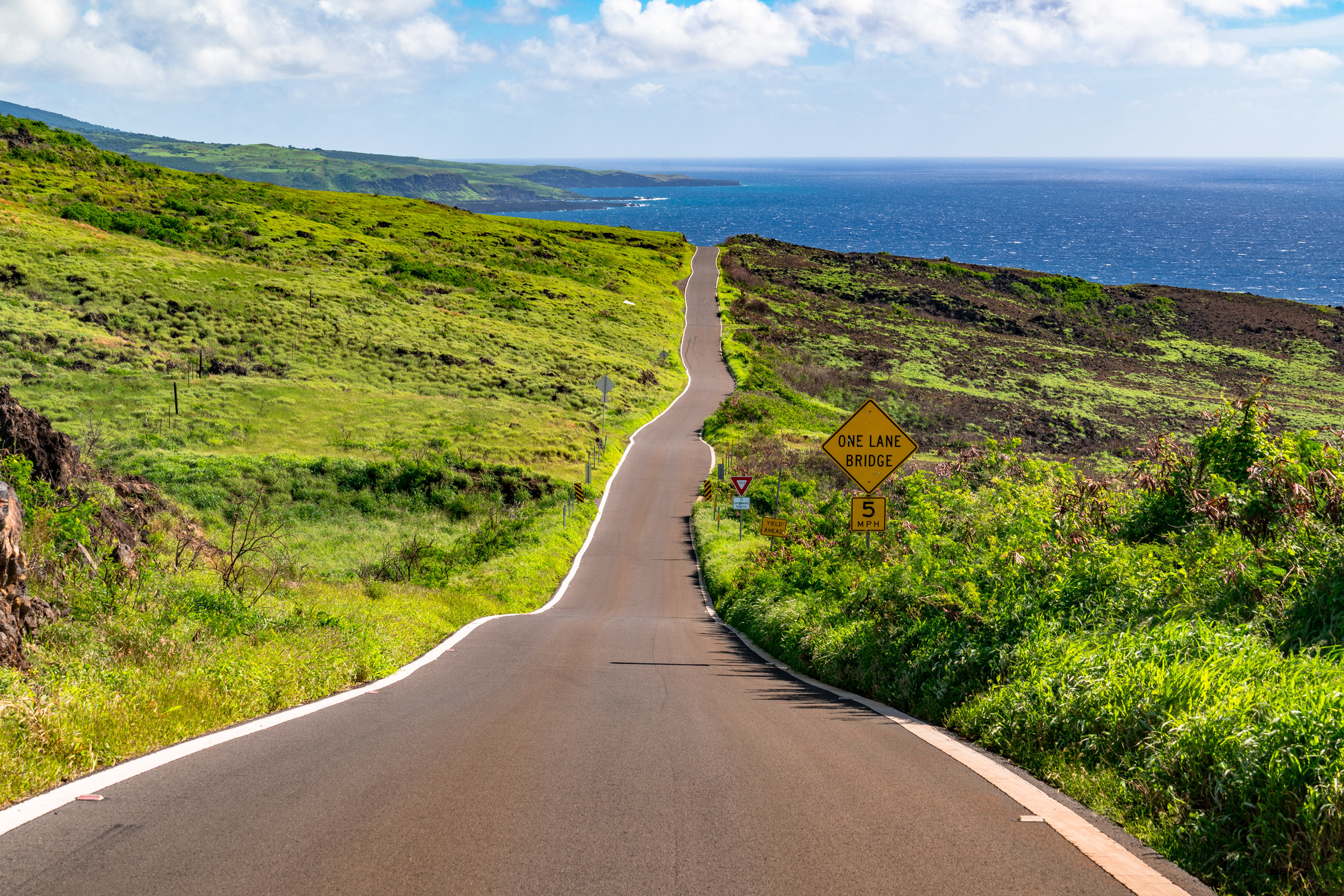
Drive Times from Popular Spots on Maui
- Lahaina to the Pipiwai Trail: 2.5 hours
- Wailea to the Pipiwai Trail: 2.5 hours
- Kihei to the Pipiwai Trail: 2 hours 15 minutes
- Kaanapali to the Pipiwai Trail: 2.5 hours
- Hana to the Pipiwai Trail: 30 minutes
Pipiwai Trail Basic Information
Length: 4 miles round trip
Time Required: 2 – 3 hours
Elevation Gain: 820 feet
What to Wear & Pack
You should know that the Pipiwai Trail is typically muddy. The level of muddiness depends on two things: how recently it has rained and how busy the trail has been that day.
Even if you arrive on a bright and sunny day it’s safe to assume that the trail will still be muddy.

Above you can see me wearing
What Shoes to Wear for the Pipiwai Trail
I recommend wearing either a good pair of hiking boots or sandals with straps – like these for men (which I love and wear) & these for women (which my wife loves & wears).
What Kind of Clothing to Wear
I highly recommend wearing lightweight, breathable pants, a thin top layer, and pack a rain jacket. Pants in Hawaii you might gripe? Some of you might have guessed the reason for this already. Our favorite flying insects like this trail too – mosquitoes!
Are There Mosquitoes on the Pipiwai Trail?
The short answer is yes. The mosquitoes on the trail can range from just a few on some days to downright awful other times. This is why I recommend wearing lightweight pants so you’re legs don’t end up with a bunch of welts!
We carry around this Eco-Friendly Insect Repellent with us as well which is pretty effective.
Hiking the Pipiwai Trail (A Guide)
Pipiwai Trail Part I: The Muddy Ascent
Now that you’re all geared up and on the trail let’s get hiking! The first part of the trail is typically the muddiest so if you’re thinking ‘is it like this the whole way!?’ the answer is no.
The trail starts right across the Road to Hana (Hana Highway) and gently ascends for the first .4 miles up a rather root-filled trail to one of the top sites on the island.
Along the way you’ll see some signage about steep drop offs like the one Jeff Bezos famously posed in front of while threatening Leonardo DiCaprio. Heed the signs and don’t follow the side trails.
Piwai Trail Part II: The Banyan Tree
The Pipiwai Trail banyan tree is one of the largest on the island of Maui and an awe inspiring sight to behold. This banyan tree is a great place to rest and drink some water.
While stopping here I couldn’t help but wonder what the age of Haleakala’s Pipiwai Banyan Tree. So I did some digging, asked some park rangers, and scoured the web.
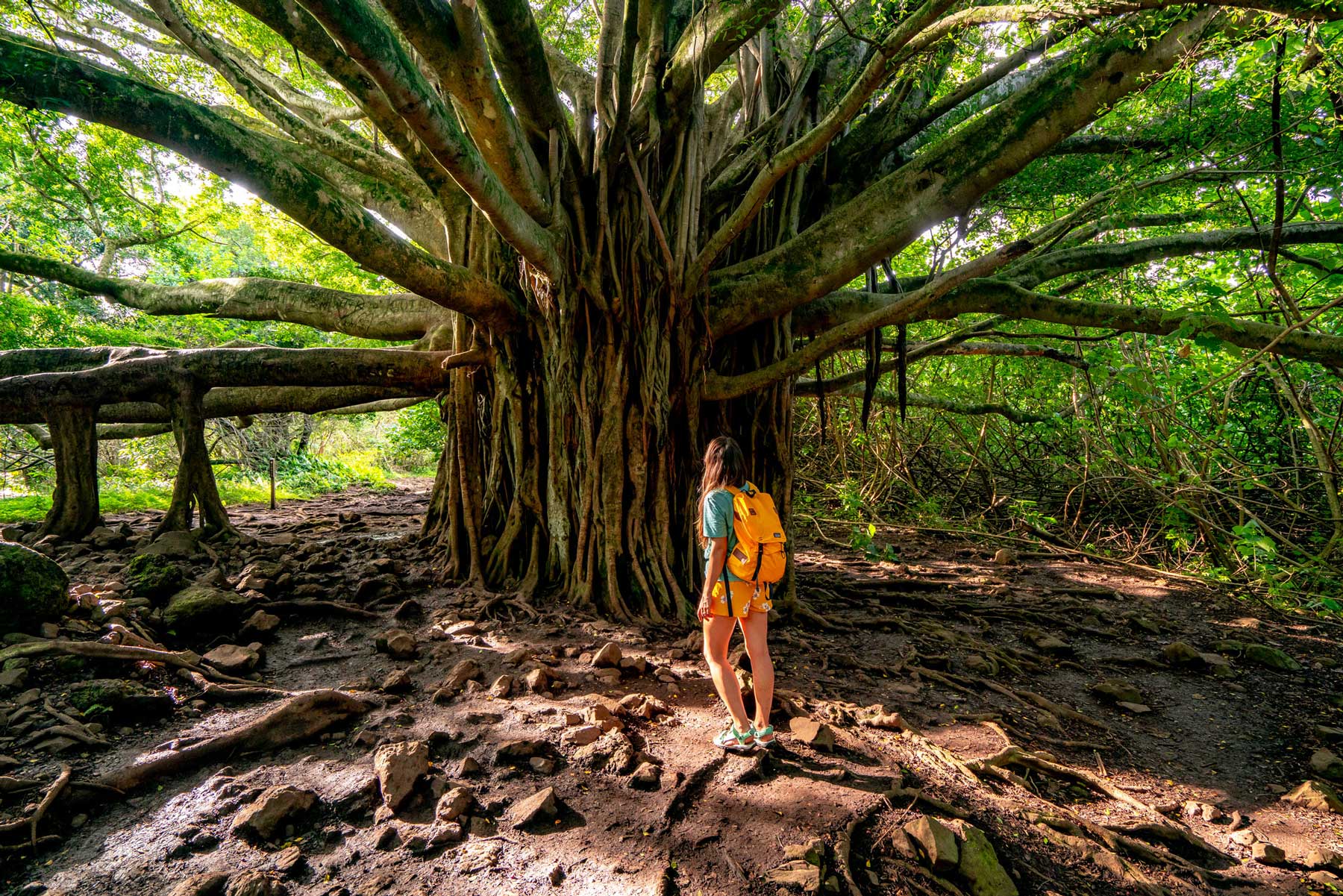
What is the age of the Pipiwai Banyan Tree on Maui?
The Pipiwai Banyan Tree is estimated to be over 100 years old with branches that stretch over 60ft long. That’s about the extent of the information I could get on this famous tree.
If anyone has more specific info please drop it into the comments below!
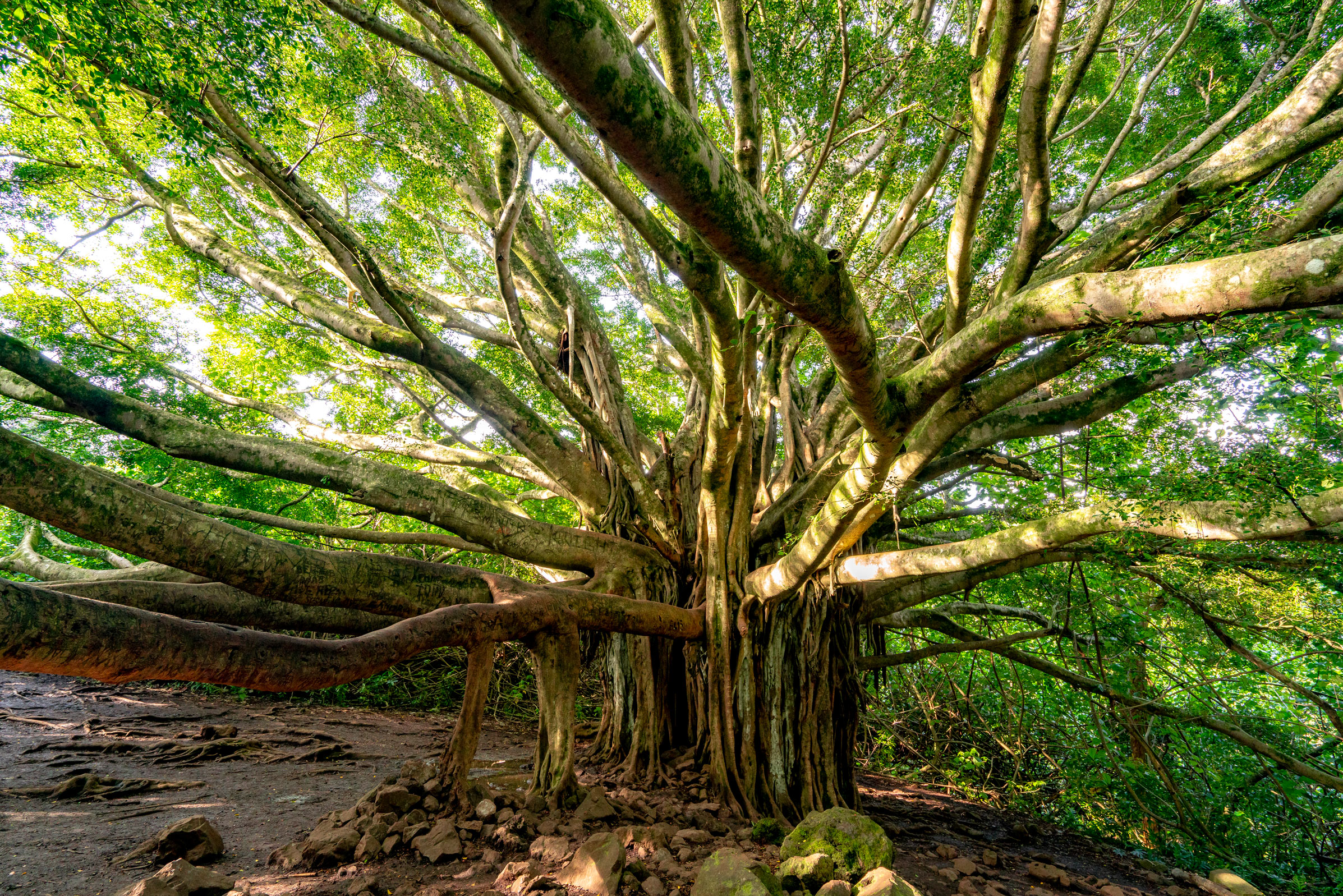
Pipiwai Trail Part III: The Best Bamboo Forest on Maui
Continue down the Pipiwai Trail from the banyan tree you’ll continue to ascend another .4 miles (10 minutes or so), more gradually than before, until you reach an epic (steel?) bridge. This bridge leads to a favorite part of the trail for most folks – the bamboo forest.
The coolest vantage of the bridge itself is heading toward the bamboo forest so grab your best snaps there as the other side, while still cool, doesn’t photograph as well.

Across the Bridge and Into the Bamboo Forest
Entering the Haleakala bamboo forest is absolutely magical. Thick shoots tower above and bird calls echo through this stunning forest. The sounds of this place are the stuff sleep tapes are made of.
Boards have been added to parts of the trail here to make it easier for you to stay out of the mud. For reference, the bamboo forest section of the Pipiwai Trail lasts for about half a mile and takes roughly 15 minutes to hike through.
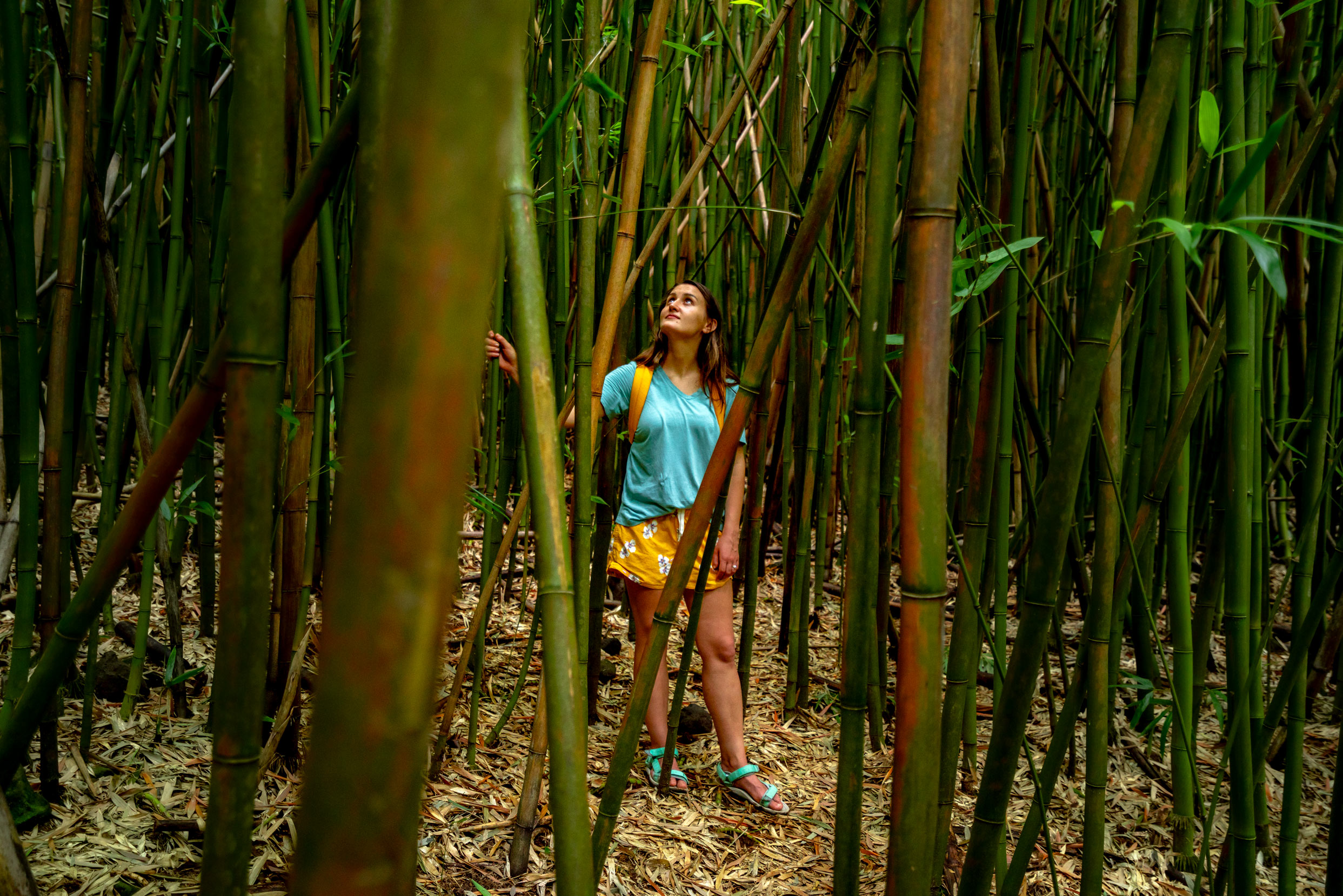
Pipiwai Trail Part IV: Waimoku Falls
Eventually the bamboo forest gives way to other types of trees. When you reach this section you’re on the home stretch of the Pipiwai Trail. Eventually you’ll start to hear the sound of rushing water.
As you reach a clearing, bright green shrubby foliage lines the boardwalk trail leading the way to top attraction of the hike. If you look up you’ll be able to catch glimpses of the Pipiwai Trail’s largest waterfall.

Waimoku Falls
Eventually it comes fully into sight. Cascading some 400 feet down to the forest floor is the beautiful Waimoku Falls.
Of all the waterfalls on Maui, Waimoku Falls is the most beautiful to me. The surrounding valley frames it majestically giving you the sense you’re on the set of a Jurassic Park film.
Reaching this waterfall means your adventure has reached its climax and it’s time to head back down the trail the way you came.

A Note of Caution
As you reach the end of the trail you’ll notice a sign that states “Do not pass this point fatalities have occurred.” While it may be tempting to ignore and continue on I implore you not to.
Huge boulders frequently and randomly fall from the top onto the massive rock pile below. You do not want to be anywhere close when that happens. People have died by going beyond this section trail. Don’t let it be you or someone you care about.
The best photos are from the trail, not beyond it.

WATCH: Pipiwai Trail Featured in this Award-Winning Haleakala National Park Video
The Pipiwai Trail is featured at second marks: 0:01 (bamboo forest), 0:35 (banyan tree), :40 (waimoku falls), 1:32 (bamboo forest trail)
Map of the Pipiwai Trail
Frequently Asked Questions About the Pipiwai Trail
How Long Does it Take to Hike the Pipiwai Trail?
Typically it takes about 2-3 hours to hike the Pipiwai Trail depending on stops. I tend to stop and take a bunch of photos along the way so for me its closer to a 3 hour affair.
How Long is the Pipiwai Trail?
The Pipiwai Trail is just about 4 miles long round trip, meaning about 2 miles each way. Officially its 3.8 miles long but if you make it to the end it’s all but assured that your GPS will read 4 miles.
Does the Pipiwai Trail Require Reservations?
Hiking the Pipiwai Trail does not require any reservations or permit, but it does require a $30 entrance fee per vehicle upon entering Haleakala National Park.
Is Oheo Gulch on the Pipiwai Trail?
Oheo Gulch (the seven sacred pools) are not accessed via the Pipiwai Trail. They are located just off the trailhead and are the result of the Palikea Stream which Pipiwai Stream feeds into.

How Do You Pronounce Pīpīwai?
Pīpīwai is pronounced pea-pea-why.
Pipiwai Trail Hours
Technically the Pipiwai Trail is open 24 hours a day, 7 days a week but I do not recommend hiking it in the dark as it is very slick and rocky.
Are There Pipiwai Trail Tours?
There are in fact Pipiwai Trail Tours available but there’s really no need in my opinion. It’s nearly impossible to get lost on this trail and the scenery is self explanatory.
Is There Sufficient Pipiwai Trail Parking?
Parking for the Pipiwai Trail is located at the Kipahulu Visitor Center of Haleakala National Park. There is a large paved lot as well as an unpaved additional parking lot with ample parking. I’ve never had trouble finding a spot here.
On Which Island is the Pipiwai Trail Located?
The Pipiwai Trail is located on the Hawaiian island of Maui.
Where is the Maui Bamboo Forest?
The most popular, most beautiful, and most legally accessible bamboo forest on Maui (known by some as bamboo forest Maui) is located about a mile down the Pipiwai Trail.
Is the Pipiwai Trail Dangerous?
So long as you stay on the trail the Pipiwai Trail is relatively safe. There are no drop offs to worry about or predators. However, the trail is muddy and slick. Falls are not an infrequent occurrence so be mindful of that.
List of Top Sites on the Pipiwai Trail
- Kipahulu Visitor Center
- Pipiwai Banyan Tree
- Pipiwai Bridge to the Bamboo Forest
- Bamboo Forest
- Waimoku Falls
Visiting Haleakalā National Park
Getting to the park is a little different from the other parks to say the least. Unless you live in Hawaii getting to this tropical paradise is going to require hopping on a plane for more than a few hours.
Flights to Hawaii vary in price throughout the year and many domestic airlines offer some very competitive rates so you don’t have to break the bank to make this happen.
Flying to Honolulu might be your best bet for the most affordable rate, from there you can hop over to Maui on a number of local Hawaiian airlines.
If you’re able to, flying in to Kahului Airport (OGG) on Maui will simplify your travel plans quite a bit. From there you can rent a car and be on your way to Haleakalā in no time.
The Summit District
Getting to the Haleakala summit takes between 1.5 – 3 hours driving.
The following are the driving distances and times from other locations on Maui:
- Kahului: 38 miles – 1 hour 15 minutes
- Kihei: 45 miles – 1 hour 15 minutes
- Wailea: 50 miles – 1 hour 30 minutes
- Lahaina: 60 miles – 1 hour 45 minutes
- Ka’anapali: 64 miles – 1 hour 50 minutes
- Hana: 70 miles – 3 hours
Kīpahulu District
The Kīpahulu District is located off the Road to Hana on the southeastern side of Maui.
The following are the driving distances & times from different locations on Maui, via the Hana Highway:
- Hana: 35 minutes – 11 miles
- Lahaina: 3 hours 30 minutes – 84 miles
- Ka’anapali: 3 hours 45 minutes – 89 miles
- Wailea: 3 hours 20 minutes – 76 miles
- Kihei: 3 hours – 70 miles
- Kahului: 63 miles, 3 hours
About Our Travels to Haleakalā National Park
We visited Haleakalā for the first time back in 2016 as part of a small film crew and it’s vibrant and at times rugged island beauty has been etched in our minds ever since.
From the harrowing drive along the Road to Hāna, to the pristine beaches, to the roaring waterfalls and dense rain forests, Haleakalā will blow you away with it’s other-worldly sights.
It may be difficult to reach, but once there you’ll come to appreciate it’s remote beauty and island tranquility.
We spent several weeks in the park visiting all of the main attractions and filming them to bring you the best things to do and see in the park.
This remote island paradise is teeming with adventure opportunities and we’re excited to share them with you.
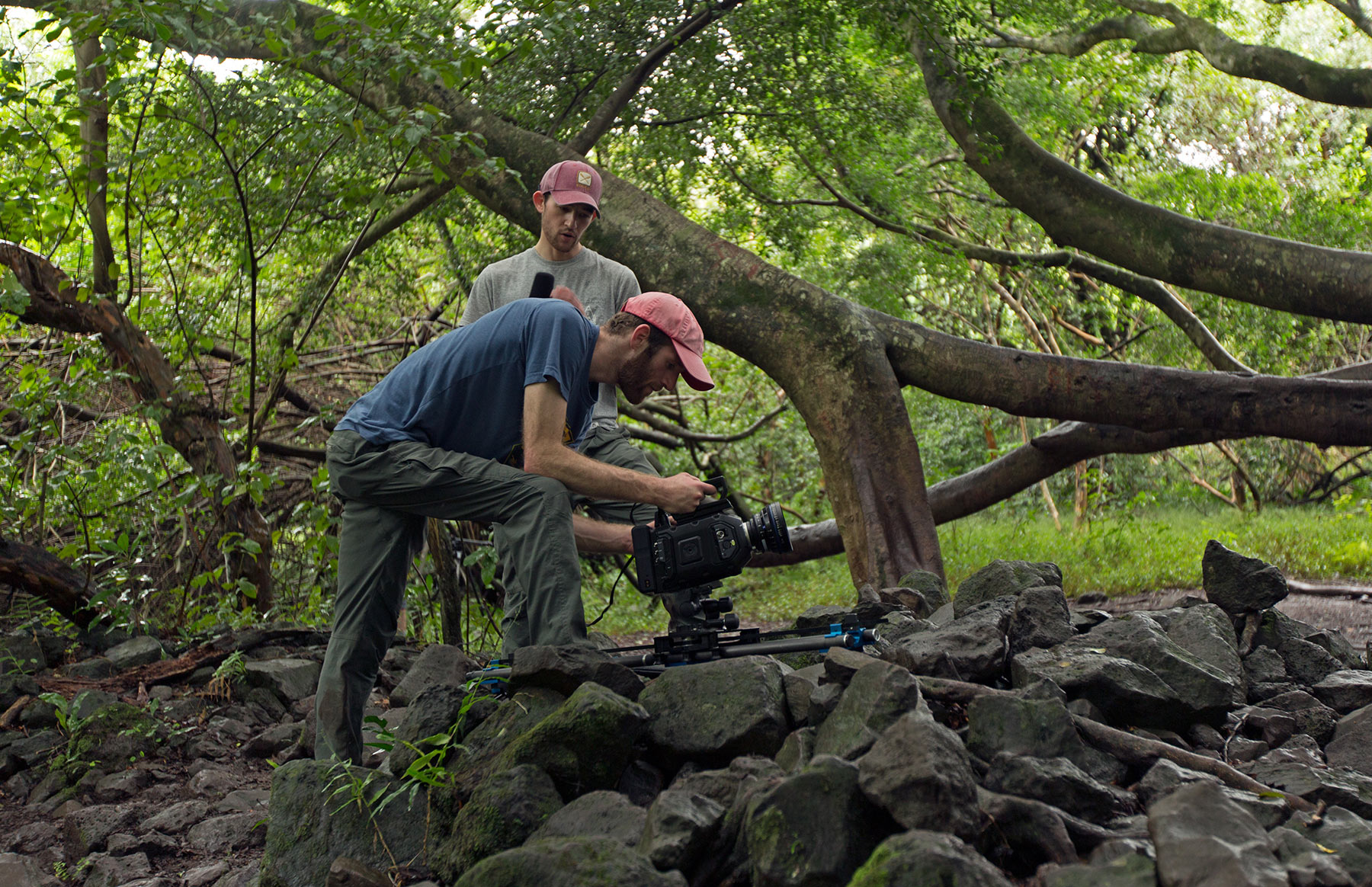
Pin the Pipiwai Trail
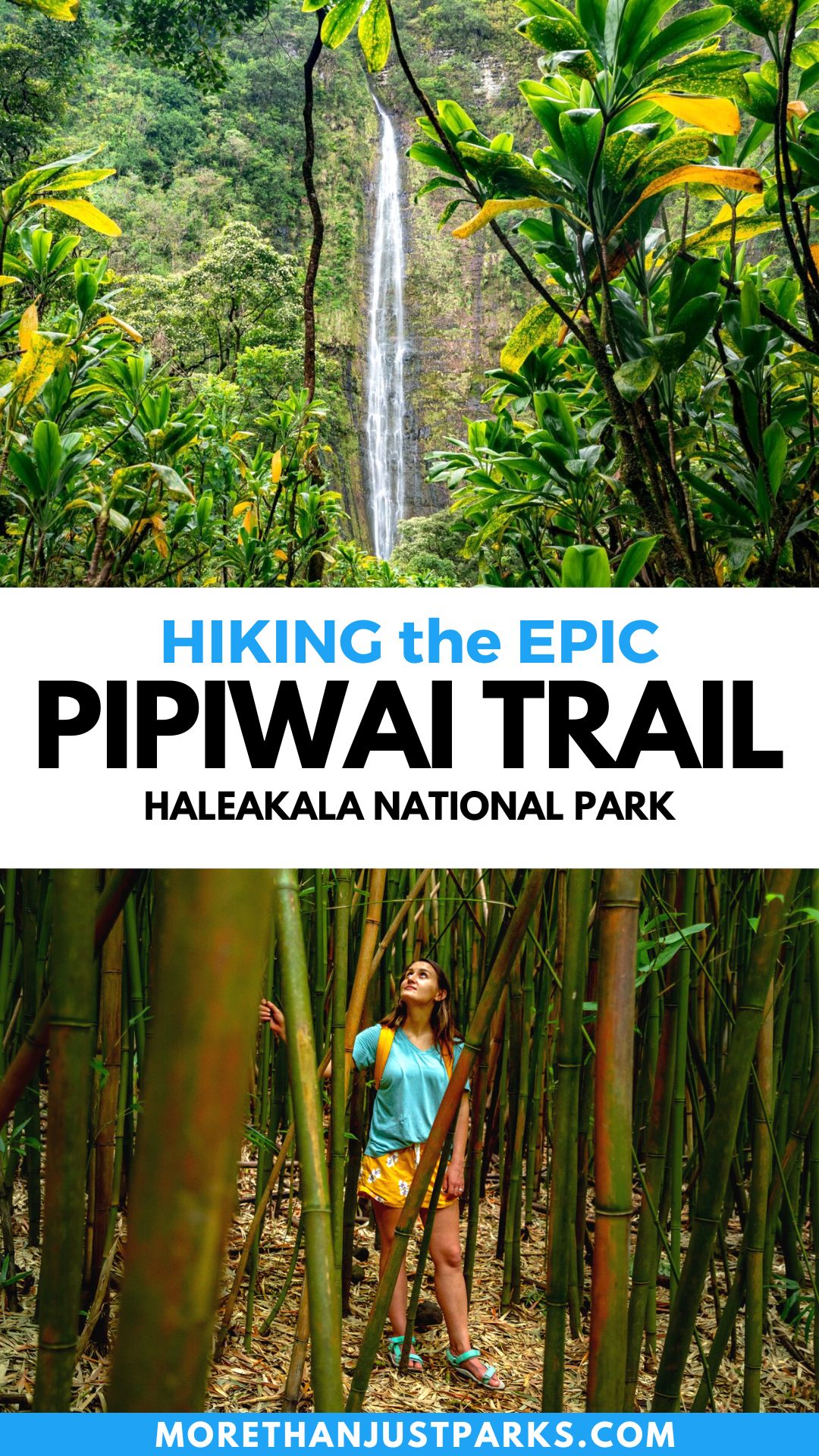

Helpful Related Articles
Hiking the Pipiwai Trail: Pipiwai Trail: Bamboo Forest, Banyan Tree, & Waimoku Falls Hike
Haleakala NP Guide: Expert Guide to Haleakala National Park
Things to Do Hawai’i Volcanoes NP: 17 STUNNING Things to Do Hawaii Volcanoes (Photos + Helpful Advice)
Hawai’i Volcanoes NP Guide: Expert Guide to Hawai’i Volcanoes National Park
Hawaii National Parks Guide: Expert Guide to the Hawaii National Parks
Pu’u Loa Petroglyphs: Visiting the Incredible Pu’u Loa Petroglyphs
Waimoku Falls: Visiting Waimoku Falls: Haleakala National Park’s Best Waterfall
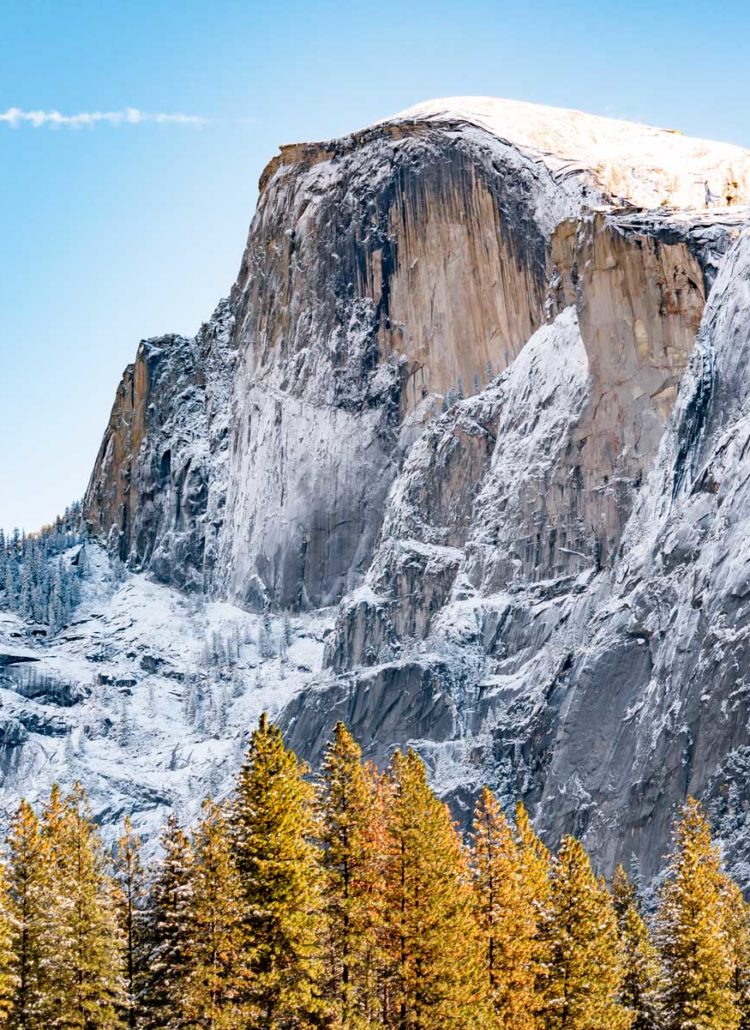




I just read that this site is officially closed now. Do you know anything about this?
Hey Chris,
I just double checked with the National Park Service and according to them the trail is still open! Swimming isn’t allowed in the Pools there anymore because of how unsafe it is but other than that should be good to go.
Hope this is helpful.
Will
Thank you.
Maybe that was another bamboo forest on the Road to Hana I read about? Is there more than one. We would like to come in six months. What web sites can we read for current information for things like this, when we go?
Hey Chris,
Yes! There are a couple of fairly sketchy bamboo forests along the way where you park on a shoulder and do a muddy trek down legally questionable trails that I don’t really recommend. Take my word that the Pipiwai Trail has the best bamboo forest by far along the Road to Hana and it’s managed by NPS.
As far as other resources I recommend for your trip here’s a great article on the best beaches on Maui and where to find sea turtles on maui.
Other than that, I’d check the NPS Haleakala page for park alerts.
Sounds like a really fun trip. I’ve been in January & February before and it’s lovely!
Cheers,
Will